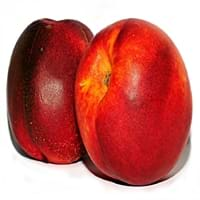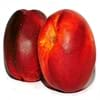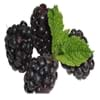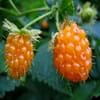Health Benefits
Cancer prevention, Heart care
Cancer prevention, Cures gastro-intestinal troubles, Improves night vision, Improves stomach health, Prevents diabetes, Prevents high blood pressure, Reduces blood circulation problems
General Benefits
Anti oxidant properties, Boosts immune system, Digestive aid, Eye care, Helps in weight loss, Maintains healthy cholesterol level
Fights against infections, Helps in weight loss, Prevents blood clotting in vessels, Treatment of urinary tract infections
Skin Benefits
Anti-aging benefits, Reduces wrinkles, Skin rejuvenation
Anti-aging benefits, Nourishes skin, Protects against skin damage
Hair Benefits
Protects hair
Prevents hair loss
Allergy Symptoms
Anaphylaxis, Asthma, Breathing difficulty, Diarrhea, Hives, Itching, Itchy eyes, Skin rash, Sneezing, Swelling of mouth, tongue or lips, Tingling sensation in mouth, Vomiting, Watery eyes, Wheezing
Not Available
Side Effects
Allergic reaction, Headache, Nausea
Decrease in blood sugar levels, Diarrhoea, Dizziness, Headache, Internal bleeding, Stomach pain
Best Time to Eat
Best if taken as a breakfast (or empty stomach), As a snack in the late afternoon, Eat the fresh ones, avoid mixing with any other foods, don't eat after meal., Morning time (before lunch)
As a snack in the late afternoon, Don't consume at night and before bed, Eat the fresh ones, avoid mixing with any other foods, don't eat after meal., Morning time (before lunch)
Vitamin B5 (Pantothenic Acid)
Vitamin C (Ascorbic Acid)
Vitamin K (Phyllochinone)
Calories in Fresh Fruit with Peel
Calories in Fresh Fruit without Peel
Not Available
Not Available
Calories in Frozen Form
Not Available
Not Available
Calories in Dried Form
Not Available
Calories in Canned Form
Not Available
Not Available
Season
Autumn, Summer
Summer
Varieties
Arctic Jay, Artic Rose, Artic Star, Armking, Desert Dawn, Fairlane, Fantasia, Silver Lode, Snow Queen, Stanwick and Stark Sunglo
Dwarf bilberry, Piper, bog blueberry, Northern bilberry, Mountain bilberry and Oval-leaved bilberry
Color
Orange, Pink, Red, Yellow
Dark purple
Inside Color
Yellow
Light Green
Soil Type
Sandy loam
Moist, Well-aerated
Climatic Conditions
Sunny, Warm
Cold
Facts about
- The name ‘nectarine’ is with reference to the sweet food the gods eat, ‘nectar’.
- Nectarines are sometimes called ‘shaved peaches’ because their skin is smooth with no fuzz.
- Bilberries are used in manufacturing of alcoholic drinks.
- They are used to improve aromas of sorbets.
- The green extract of it's leaves is used in textile industry as natural dye.
Spirits
Not Available
Yes
Other Countries
Argentina, Chile, Egypt, Greece, Iran, Italy, Spain, Turkey, United States of America
Denmark, Finland, Iceland, Sweden
Top Importer
Germany
United States of America
Botanical Name
Prunus persica
Vaccinium myrtillus
Synonym
Not Available
blaeberry, whinberry, European blueberry, whortleberry
Subkingdom
Tracheobionta
Tracheobionta
Division
Magnoliophyta
Magnoliophyta
Class
Magnoliopsida
Magnoliopsida
Subclass
Rosidae
Dillenhidae
Family
Rosaceae
Ericaceae
Species
P. persica
Vaccinium myrtillus
Difference Between Nectarine and Bilberry
We might think that Nectarine and Bilberry are similar with respect to nutritional value and health benefits. But the nutrient content of both fruits is different. Nectarine and Bilberry Facts such as their taste, shape, color, and size are also distinct. The difference between Nectarine and Bilberry is explained here.
The amount of calories in 100 gm of fresh Nectarine and Bilberry with peel is 44.00 kcal and 44.00 kcal and the amount of calories without peel is Not Available and Not Available respectively. Thus, Nectarine and Bilberry belong to Low Calorie Fruits and Low Calorie Fruits category.These fruits might or might not differ with respect to their scientific classification. The order of Nectarine and Bilberry is Rosales and Ericales respectively. Nectarine belongs to Rosaceae family and Bilberry belongs to Ericaceae family. Nectarine belongs to Prunus genus of P. persica species and Bilberry belongs to Vaccinium genus of Vaccinium myrtillus species. Beings plants, both fruits belong to Plantae Kingdom.









